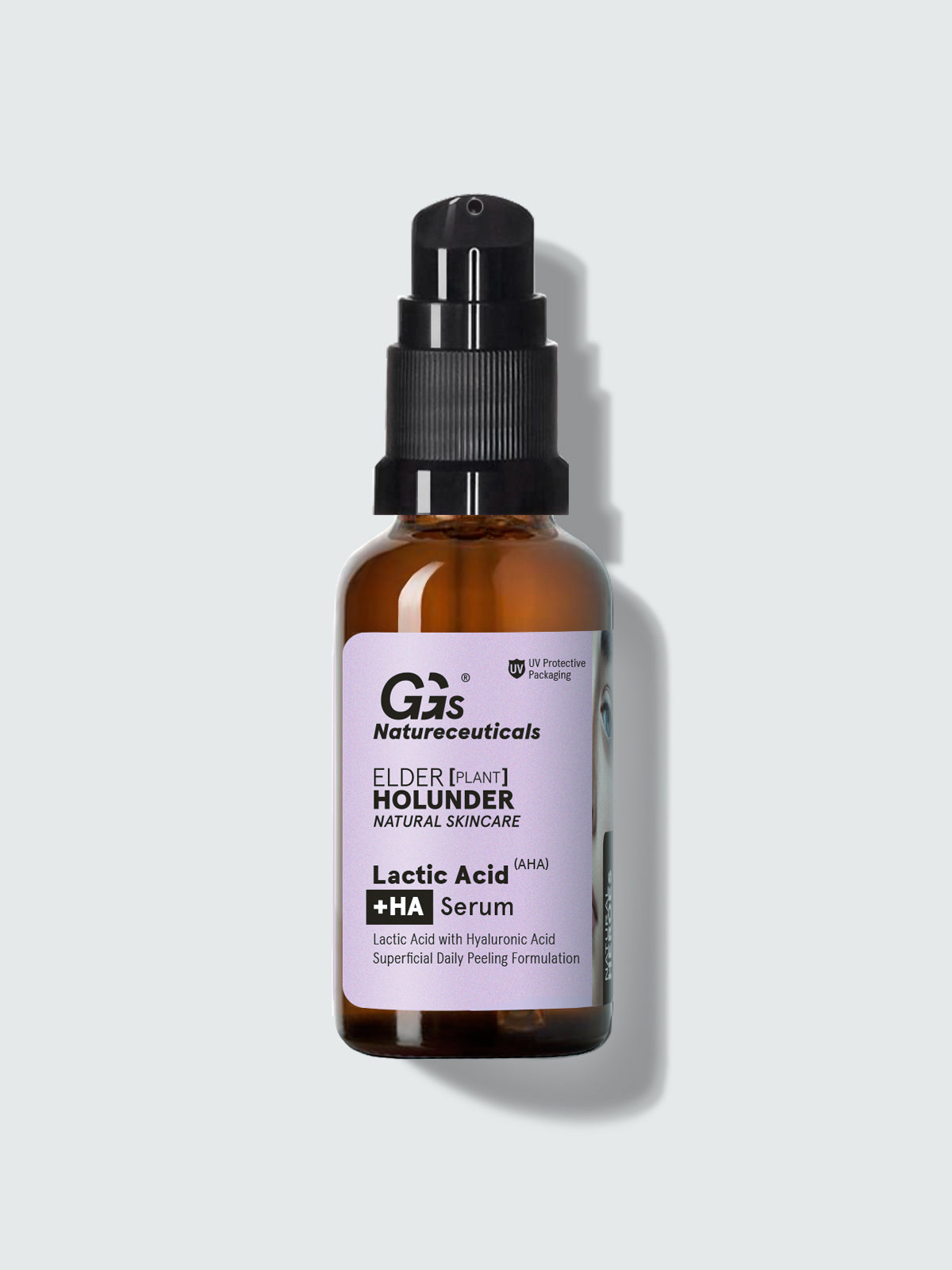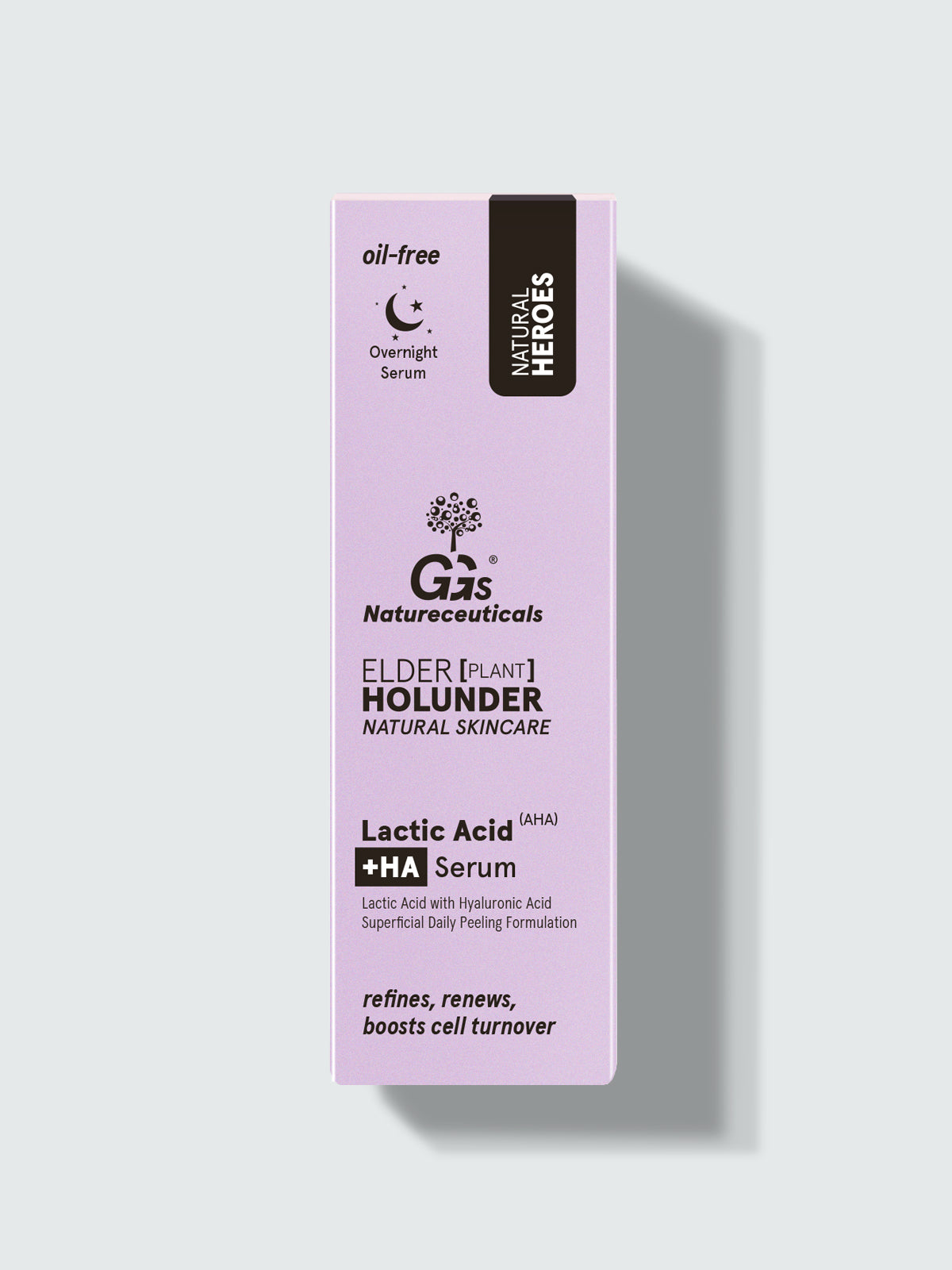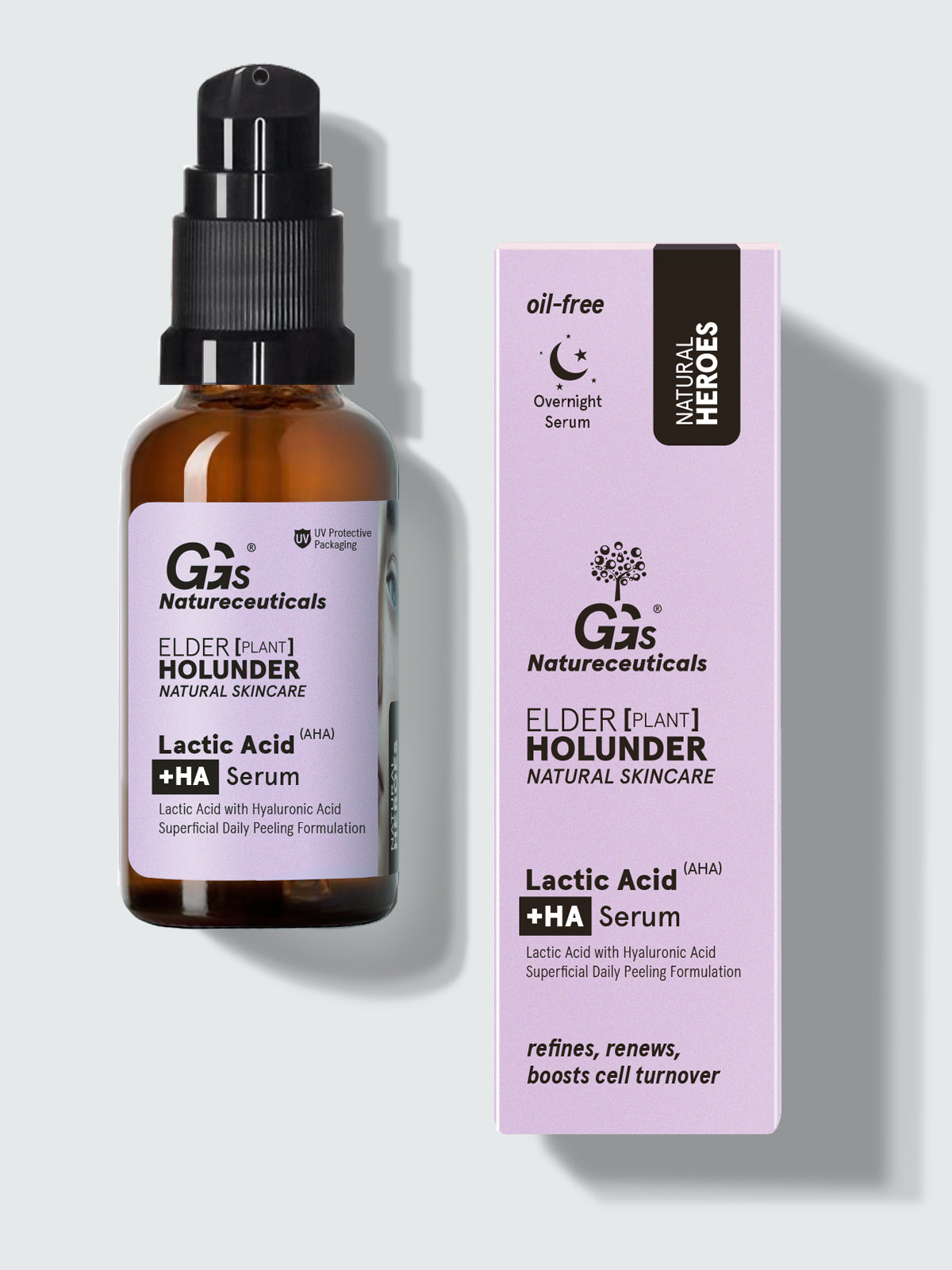Lactic Acid +HA Serum
Lactic Acid +HA Serum
Lactic Acid Micropeeling Serum • 30 ml
- Lactic acid works overnight as a gentle peel, smoothing the skin.
- Promotes natural skin regeneration for a clearer and more radiant appearance.
- Hyaluronic acid deeply hydrates for a plump skin feeling.
- Lactic acid works overnight as a gentle peel, smoothing the skin.
- Promotes natural skin regeneration for a clearer and more radiant appearance.
- Hyaluronic acid deeply hydrates for a plump skin feeling.
- Helps to reduce imperfections and fine lines.
- Contains antioxidant and soothing extracts from elderberries and chamomile.
- Suitable for all skin for all skin types, particularly dry and dehydrated skin.
Read More
GOOD TO KNOW
-

Boosts cell turnover
-

Refines and renews
-

Exfoliates
-

Minimize pores
-

Oil free
-

Fragrance free
Couldn't load pickup availability
SMART PREMIUM PLUS
SMART PREMIUM PLUS
<ul>
<li>With a strong focus on modern high-performance formulations, we place great emphasis on first-class processing and the finest ingredients approved by current natural cosmetics standards (COSMOS, EcoCert, NATRUE). At GGs Natureceuticals, this approach allows us to offer a high-quality product range in premium natural cosmetics.</li>
</ul>
HOW TO USE
HOW TO USE
<ul>
<li>In the evening, apply to cleansed skin on the face, neck, and décolleté and let it absorb. Avoid the eye area. Without removing the product from the skin, after about 2 minutes of application time, eye and facial care can be applied.</li>
</ul>
KEY ACTIVE INGREDIENTS
KEY ACTIVE INGREDIENTS
<ul>
<li>Lactic Acid, Hyaluronic Acid, Organic Witch Hazel Water, Elderberry Extract, Chamomile Flower Extract</li>
</ul>
INGREDIENTS / INCI
INGREDIENTS / INCI
<ul>
<li>Aqua, Betula Alba Juice <strong>(Birch Sap)</strong>, Hamamelis Virginiana Leaf Water <strong>(Witch Hazel Hydrosol)</strong>, Lactic Acid, Polyglyceryl-4 Caprate, Glycerin, Sodium Hyaluronate <strong>(Hyaluronic Acid)</strong>, Sambucus Nigra Fruit Extract <strong>(Elderberry Extract)</strong>, Betaine, Chamomilla Recutita Flower Extract <strong>(Chamomile Flower Extract)</strong>, Sodium Hydroxide, Xanthan Gum, Alcohol, Benzyl Alcohol, Dehydroacetic Acid, Benzoic Acid, Tocopherol <strong>(Vitamin E)</strong></li>
</ul>
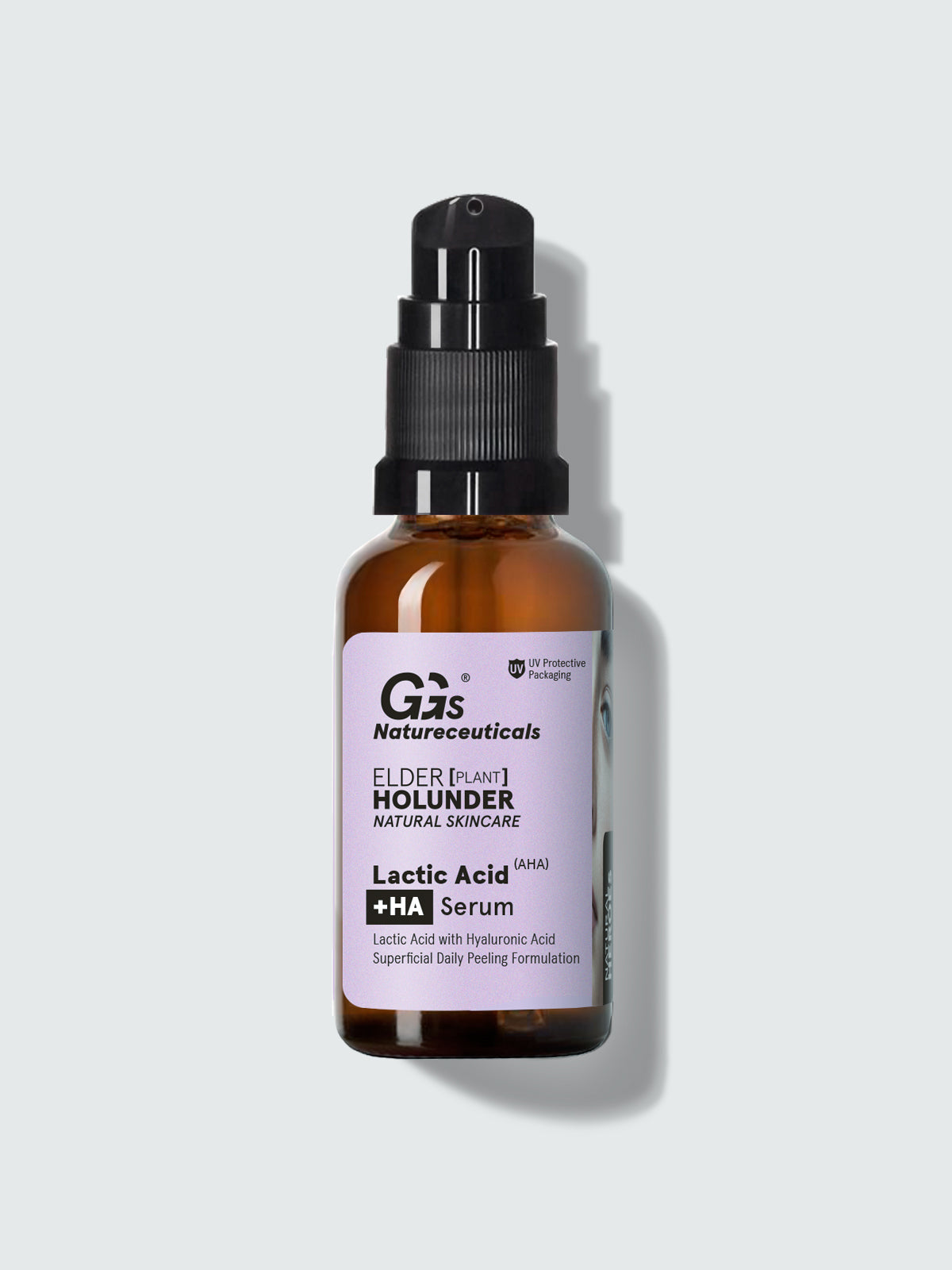
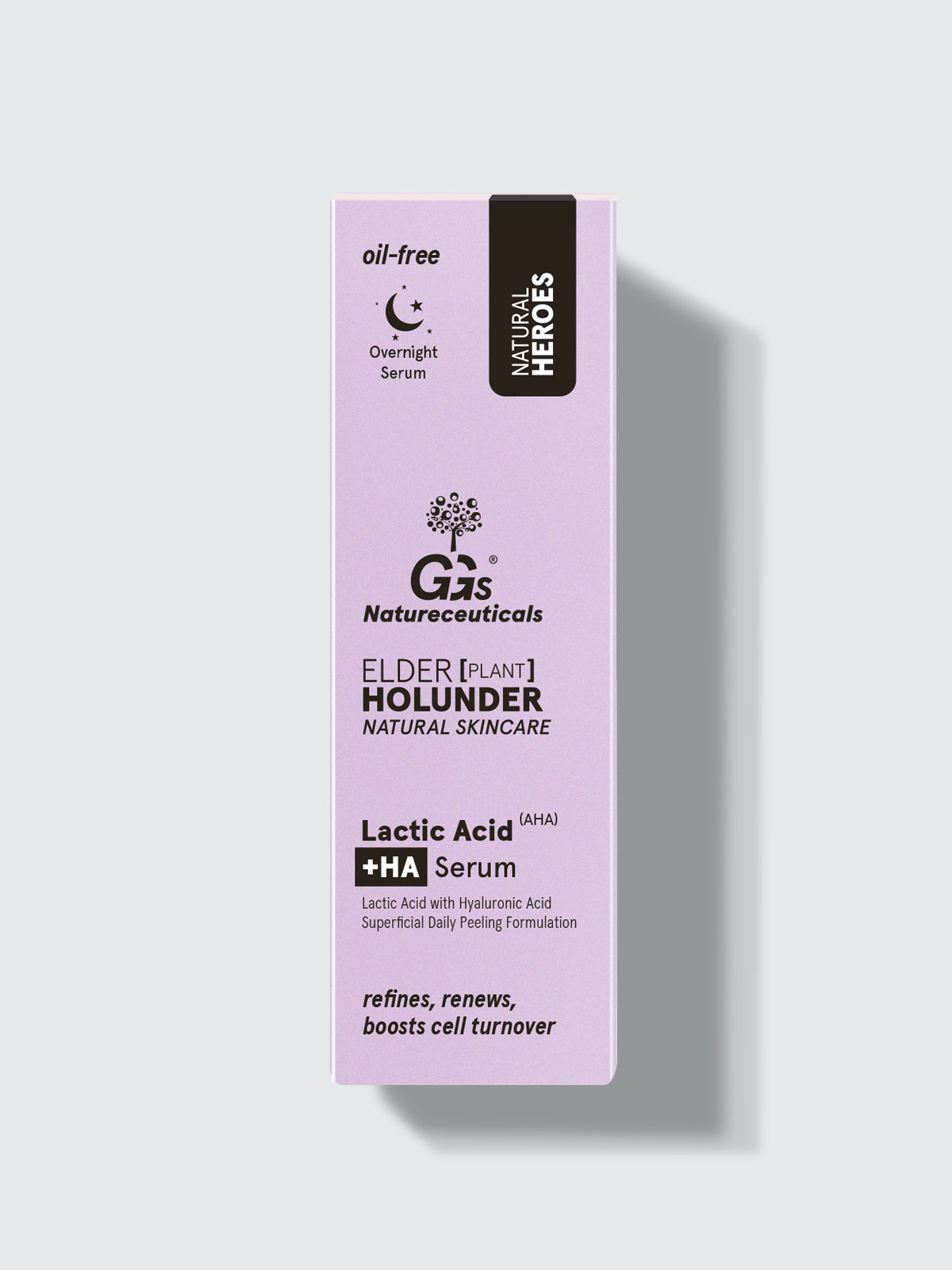
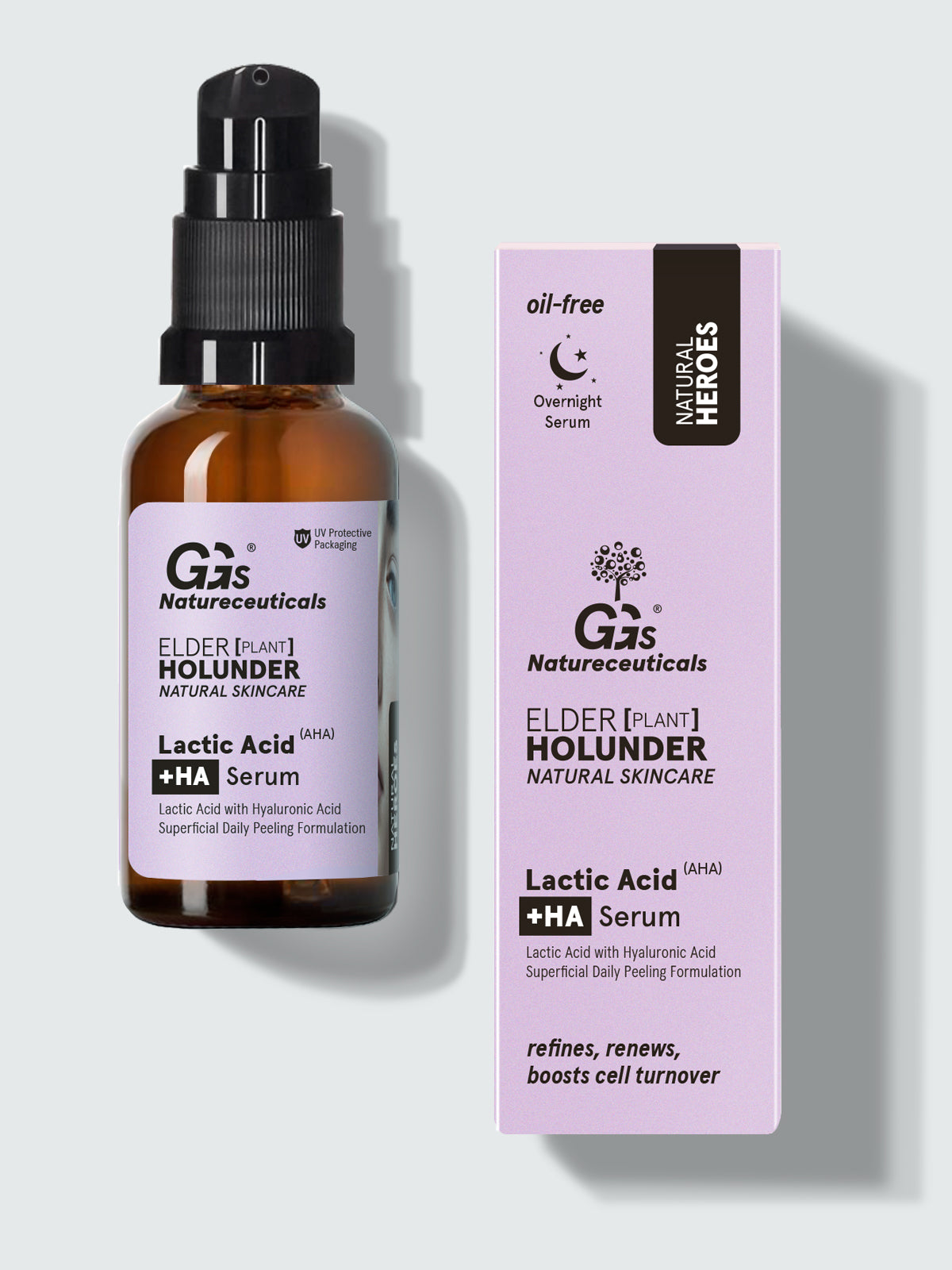
FAQs
What is Lactic Acid?
Lactic acid is part of the Alpha Hydroxy Acids (AHA) family and is also naturally present in our skin, specifically in our hydro-lipid film, or the skin's acid mantle. Lactic acid is much gentler than other AHAs. As one of the Natural Moisturizing Factors (NMF), it significantly contributes to improved skin hydration. Moreover, as a component of the skin's own acid mantle, lactic acid regulates the physiological pH value, thereby controlling the bacterial colonization of the skin.
Is Lactic Acid vegan?
In our case, the answer is a clear "yes." The lactic acid we use is vegan. Nowadays, lactic acid (Lactic Acid) is mostly derived from plant-based materials. It is produced during the fermentation of sugar by microorganisms and is found in both milk and plants. The confusing name comes from the fact that lactic acid was first discovered in milk in 1780 and lactic acid bacteria were once primarily used for fermenting milk to sour milk. The lactic acid we use is derived from sugar beets.

